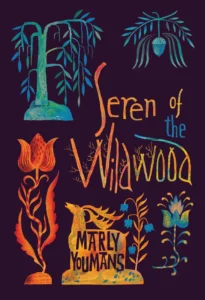The golden halo surrounding Father Jacques Hamel’s face and the golden halo surrounding the Eucharist gently held in Father Hamel’s old hands are first noticed, and then the white roses, the knife at Father’s throat, the red roses, and the legend Satan VA, “Satan, Go!”, the words spoken moments before his throat was slit (by Muslim men in jihad). The picture is composed of two triangles that form a hexagram, symbol of the Medieval Christian church. Observing details, you will notice that like a halo the symbolic objects are in circle, and like the circular Eucharist, the composition is steadied by a cross. You will notice that all of Nielson Carlin’s pictures are like this, subtle and honest, bold and truthful. Too, you will notice that Carlin’s pictures reveal themselves in order, measure, and beauty, as do classic stories.

Carlin has created classic picture stories of many Catholic martyrs, each story unique because each martyrdom is unique. “Father Francis Xavier Truong Buu Diep, Servant of God” is perhaps Carlin’s most famous martyr picture because most theatrical. In the picture we witness Father Xavier’s head serenely hovering over his body. Between body and head, we see the scythe and hammer which form the emblem of a Japanese Empire whose minions effected Xavier’s martyrdom. There is a second Xavier version with two blades that more effectively separate the head from the body, visually. Both versions are powerful icons, reminders of a world increasingly anti-Christian, anti-Catholic (in 2023 there were 350 attacks on U.S. Catholic churches, 20 Catholic missionaries murdered worldwide, et cetera).

Many of Carlin’s full-length saint portraits are pictured as if cut in stained glass. The double portrait of Saint Augustine and Saint Monica (Augustine’s mother) is among the stained-glass sets. The Augustine and Monica portraits are figurative, illustrative, boldly drawn, as are the best stained-glass windows, and alike windows these pictures seem to glow with a light that passes through. As in windows on a landscape, each saint portrait is framed in a different view of the same stage set. Carlin, a prolific Catholic artist, will sometimes frame a scene as if seen through a niche or architectural setting, most often Gothic, pretty yet firm, leafing, open so as not to interfere, structural to lend stability. These architecturally framed scenes also feature Carlin’s bold composition and telling symbols.

The best of Carlin’s pictures, “Apparitions of the Blessed Virgin Mary” for instance, are symbolic and literary, intended to be read as was, as is the expository statuary of Chartres and Notre Dame. I will not spoil the lesson by reciting “Apparitions” particulars. Instead, you might read the pictured clues that tell of each Mary apparition, and in reading be rewarded with surprise, recognition, and memory. This is the advantage of telling pictures, a reward not available, not possible in the merely abstract, in the confounding, corrupting modern.

As an artist, Carlin ascends from the great Michael Aviano, and through Aviano, Frank Riley, inheritor of the exacting technical practice made famous by Jacques-Louis David. You will remember David for picturing episodes of Roman history, of classical ethics and forceful morals. You will find in Carlin David’s clarity and moral surety, his purity of technique and sculptural form. You will also see in Carlin the poses and attitudes of ancient statuary, though more humanely sympathetic, heroic in the way of Christians, gentle and peaceful in fortitude.
You might like to know that Neilson Carlin’s pictures are most often found in postconciliar churches, buildings too often in want of beauty and meaning. As we have come to realize, post-Vatican II churches tend towards the uninspiring, often oppressive, conceptually chaotic, and narratively confusing. These churches neither assist worship nor inspire transcendence. Carlin’s beautifully traditional Catholic saints, martyrs, and scenes help return churches and congregations to faith. Worth noting: the new rite, the Novus Ordo, is Latin-named. Without strict fidelity to the Apostolic tradition of Christ’s church, we will cease to be Catholic. Without traditional pictures, statues, stories, the aesthetic Deposit of Faith, we will simply cease to be. Strength in art and in civilization comes not from novelty but from preservation, conservation, and growth within tradition.
Carlin grows tradition through his academy, The Carlin Academy (Kennett Square, Pennsylvania), where he teaches not only the “how” but the “why” of Classive art. In the old 20th Century, Carlin participated in the world’s commercial art scene, exhibiting his secular pictures at commercial galleries and in national competitions (selling numerous paintings and receiving many prizes). Since conversion to the Catholic faith (this century), Neilson Carlin has been blessed with fulfilling commissions, the gratitude of congregations, and joy in humbly serving God. With honesty it can be said of the Catholic artist Nielson Carlin, “He gives God-like things to God.”
* * *
More on Neilson Carlin’s work:
https://www.neilsoncarlin.com/
https://www.carlinacademy.com/
Michael Curtis is a sculptor, poet, historian, Artist-in-Residence at the Common Sense Society whose recent books include Classical Architecture and Monuments of Washington, D.C. and Modern Art: An Exhibition in Criticism.



